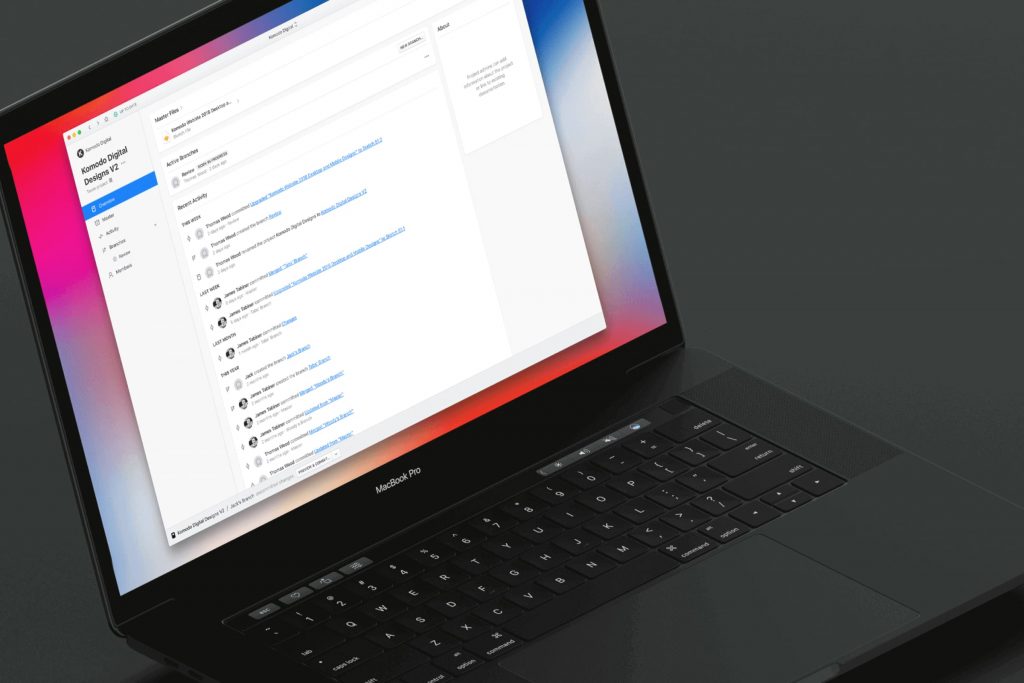How Abstract Improved Our Design Workflow

What is Abstract?
We were granted permission to access the Abstract Beta in mid 2017 which came at a great time for us to test it out. Abstract is a tool for better collaboration between design teams. Similar to that of GitHub for developers, where a project (master) consists of the main branch and working branches. It enhances the daily workflow for better efficiency and collaboration.
After hearing a brief outline of what Abstract is and what it does, the team were enthusiastic to start using the software. I don’t believe we were too expecting of it, but rather hoping for an alternative to how we go through the file managing process ordinarily.
What was life like before Abstract?
The design team at KOMODO had been working on our own website redesign at the time using Sketch as our main design toolkit. With multiple designers working on the project at any one time, file management could be problematic. Typically, our workflow would consist of duplicating a master file and for each of us to work on the duplicate, then merge those files back into the master file manually once this had been completed.
This inevitably throws up some issues from the start. One of the main annoyances was the need for us to go back through and copy each change from the duplicate working files and paste them into the master file. This onerous task consumed a great amount of time that could have been better spent elsewhere, as well as increasing the risk of small changes being missed or overwritten.
Managing the files would also become increasingly awkward due to the addition of Sketch file duplicates and variants. This would develop into a contention point between the team, if the files were mishandled and causing errors within the designs. This all translates into further time consumption and less efficiency within a team.
How do we use Abstract?
Abstract allows design teams to manage their files in a much more controlled manner. Each project harbours a master branch to which everything merges. The master file is not touched, but instead allows branches to stem from it to be used as working files. This means multiple team members can work on the same file, at the same time, without the worry of overwriting each other’s work. It takes all of the worry out and allows you to focus solely on the task at hand. Much like Github, users are encouraged to generate new branches for blocks of work which can then be merged into the master file after review and approval.
All branched Sketch files attached to a project are opened through Abstract and are stored in a temporary folder. When users commit and merge the changes, Sketch automatically closes the file.
One of the main differences to our workflow after using Abstract is the sheer increase in efficiency within the team by eliminating those typical pain points. By saving time on having to manually copy and merge changes, Abstract can alleviate much of the stress often felt ensuring deadlines are met. Instead, designers can focus more on creativity and design rather than on managing files, creating better work both internally and for clients.
The greatest benefit we have noticed, however, is just how much better collaboration is between the team. Abstract allows us to attach notes to our merged branches and provides us with a clearer view of what work has been undertaken, why, and by whom. Collaborating with other members of the team using Abstract is a much-improved experience, allowing the team to easily communicate what we are each working on without work conflicting.
What have been the challenges?
Although Abstract has helped to improve workflow, it isn’t without flaws. We noticed some delay on the response from certain actions, such as merging to the master file and the duration it took to open a large branch file. Another snagging point is when different designers merge into the master file at the same time, which has forced us to stagger the points and time that we merge rather than being completely flexible.
Would we recommend?
That being said, the pros certainly outweigh the cons and Abstract removes many of the common issues out of a project in which multiple team members are working. As a tool, Abstract should definitely be held in high regard. After using it for close to a year now, it has become an integral part of our daily design workflow. It’s difficult to fathom the time it would have taken us to manage the files we’ve been working on had we not been using Abstract. There are still many features integrated into Abstract that we have yet to explore, and we look forward to doing so. In the meantime, we will continue to use Abstract as part of our streamlined workflow and continue to keep improving collaboration between the team.
Interested in trialling out Abstract for yourself? Check out their website here.

Got an idea? Let us know.
Discover how Komodo Digital can turn your concept into reality. Contact us today to explore the possibilities and unleash the potential of your idea.

Sign up to our newsletter
Be the first to hear about our events, industry insights and what’s going on at Komodo. We promise we’ll respect your inbox and only send you stuff we’d actually read ourselves.






